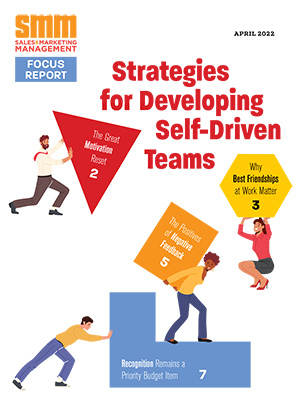In consumer product marketing, it’s probably safe to say any customer is a good customer. Even if said customer is a deadbeat with bad credit, you can change the terms and only accept cash payment.
But industrial marketing is a different story. Most of the time manufacturers sell to other manufacturers or other businesses. Some of these customers are very big companies that tend to dictate terms of the sale—and even how the product is built.
If you examine the customer list of most small and mid-size manufacturers (SMMs) you will find the 80/20 rule applies. In other words, 20 percent of their customers account for 80 percent of their sales volume. In fact, it is common for only 10 percent of the customers to account for most of the supplier manufacturer’s sales volume.
Needless to say, the profitability of these customers becomes a very serious issue. Let’s say a hypothetical manufacturer has three large customers accounting for 55 percent of the company’s business…and none of them are profitable. Obviously, this is a dangerous situation to be in.
How does this happen? For the last 20 years, customers up and down the supply chain have been trying to reduce costs to compete in a global economy. The pressure from many of these larger customers have forced price/cost reductions onto their suppliers.
The suppliers, on the other hand, are very afraid to lose these customers because their orders are such high volumes, and because they use so much of the supplier’s capacity. The suppliers then begin to rationalize the declining margins with statements such as, “Well we don’t make as much profit, but these big customers keep our people employed and cover our fixed costs.” Or perhaps, “Gee, the plant is all set up to manufacture for these customers, and if we pursue new customers and new markets, it will take too much investment in new tooling and equipment.”
These statements are really just a form of denial, because somehow they assume the customer will quit asking for more price discounts or things will change for the better. But if you just look at what happened in the automobile industry, it’s easy to see the dangers and the outcomes of this line of thinking.
The big car companies have been hammering on their suppliers for years for lower prices, and at the same time forcing them to adopt expensive programs such as ISO 14000. In recent years, the price discounts have been mandated as part of their contracts. Many of the suppliers who have tried to “hang on” to the auto business and have accepted these terms have found themselves in financial trouble.
The top-tier suppliers like Delphi Corp, Dana Corp, Collins and Aikman, Federal Mogul, Tower Automotive, Dura Automotive, and Intermet have been forced into Chapter 11. This affects thousands of smaller suppliers who support these large companies and they will all get into financial trouble unless they can diversify into other markets.
A more hopeful scenario comes courtesy of SRC Holdings in Springfield, MO. When the company first started (following the recession of 1983), it was doing engine remanufacturing and had taken on $8.9 million of debt.
“When we were starting out in the 1980s, more than 75 percent of our labor hours were in the truck market,” says CEO Jack Slack. “We did some investigating and found out that the truck market has a recession every six years. So we had to ask ourselves what we’d do if we had a recession.
“We thought about what goes up in a down market,” he continues. “and we discovered that automobile parts go up, because people keep their cars longer and fix them. That’s how we got into the automotive aftermarket business. That kind of thinking became part of our culture and our way of doing business.”
Slack knew the more the company diversified, the safer it would be. SRC Holdings is now a mini-conglomerate with 26 businesses and 1,200 employees. They make automobile engines, refrigeration units, agricultural machinery, irrigation pumps, and much more.
These may seem like extreme examples, but it makes the point that in the new global economy SMMs must defend themselves and consciously avoid a concentration of customers that can put you out of business. Better to go on the hunt for new customers who will see the value of your price and products than to continue accepting losses. The answer to bad customers who control the majority of your sales is diversification.
To make this problem more understandable, evaluate your own large customers. Take a few minutes and print out a list of the largest ones controlling 80 percent of your sales. Profitability is one factor, but not the only one to consider. To make an overall judgment on each, answer the following question with a “yes” or “no”:
1. Are they profitable?
2. Does the customer have potential for significant future revenues?
3. Do they truly value what you do well?
4. Are they a springboard to other like customers?
5. Can you serve them better than competitors?
6. Is this customer financially healthy?
7. Do they pay their bills on time?
Mark the customers with mostly “yes” answers with a plus. These are the best customer profiles—the kinds of customers you need for future sales. The NAICS codes for these customer profiles will help you find more like them.
Mark the customers with mostly “no” answers with a minus. You and your company are entitled to a fair margin. And good customers (even tough ones) will recognize that you, too, are entitled to make a profit. All manufacturers should be working at ways to further reduce costs through new manufacturing methods—this is another way for you to improve margins.
But those who will not let you make a reasonable margin, or who don’t really value you as a supplier for whatever reason, are probably not customers you will want long term.
You need to think about replacing these bad customers before they drive you into a bad financial position. After all, if this happens, you’ll find yourself forced to replace them. This is definitely an instance where being a little proactive goes a long way.
Mike Collins is the author of “Saving American Manufacturing” and its companion book, the “Growth Planning Handbook for Manufacturers.” To learn more about the author or these titles, visit www.mpcmgt.com.
Industrial Marketing: The Dangers of Customer Concentration
Get our newsletter and digital focus reports

Stay current on learning and development trends, best practices, research, new products and technologies, case studies and much more.

